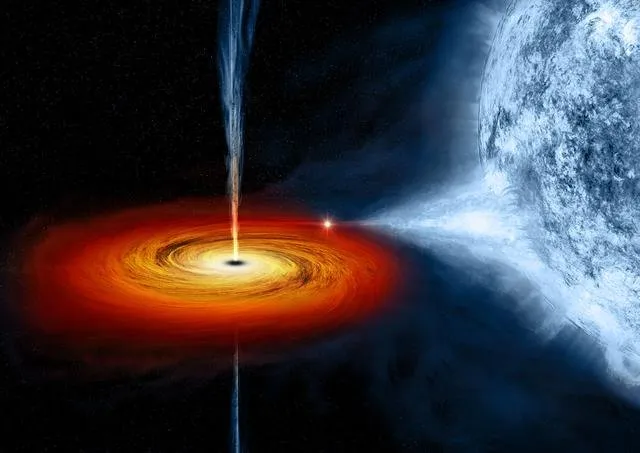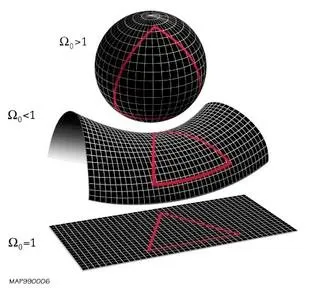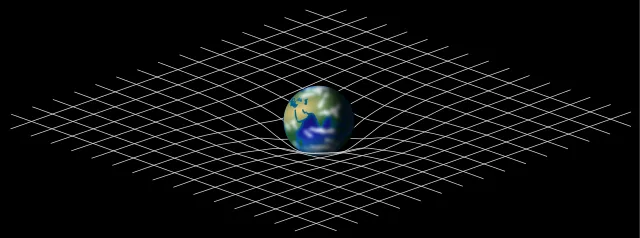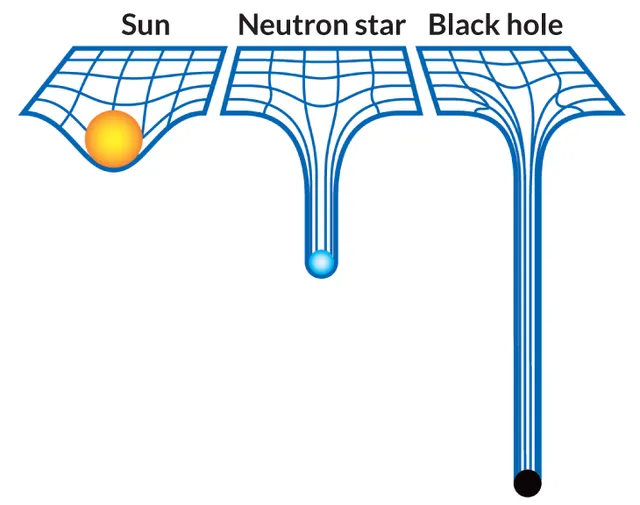In this era of gastrophysics (this is how we called gravitational wave related astrophysics), black holes have attracted more and more interest. Indeed, the observation of 5 or 6 gravitational waves by the LIGO and Virgo experiments have allowed us to conclude to the existence of black holes.
And for some reasons, I have never written anything about black holes on Steemit. Time to change this…

[image credits: NASA]
Another reason for doing so is that a triplet of Steemians (@wiplala87, @fproductions and @turksays) asked for a post on black holes, and that I promised @suesa to write it (see here).
And I am a man of words :)
And actually, as a surprize never comes alone, I will even write several posts on black holes.
In the second post (most probably next week), I will explain how black holes can actually be dark matter. But this will be for the post of next week (this one being already very long).
THE FLATNESS OF THE UNIVERSE
In order to understand what a black hole is, one must first go back to the roots: general relativity. I will not enter into details here, but I will instead provide a sketch of what is going on.
First, one starts from the fact that the universe is a flat surface to a very good approximation. This does not come from nowhere. We have very strong measurements (i.e. data) pointing to this conclusion.
I know that this may sound weird. However, everything becomes clear once one defines flatness.
Let us take a planet as an example. For sure, a planet is not flat.

[image credits: Wikipedia]
Let us put a bunch of observers at the equator of the planet, each of them being well separated from the other. We then ask them to draw parallel lines towards the north pole of the planet. Their lines, even if they are parallel, will cross each other exactly at the north pole. Conclusion: a planet is not flat.
The definition of flatness then follows: a surface is flat if two parallel lines drawn on it never cross.
Now, to check what is going on in the universe, it is a bit more complicated. By using data on the cosmic microwave background (that travels within the universe from the early days), we can derive the fact that the universe is flat. Data is data after all!
But let us remember, the universe is flat in the sense of our definition of flatness. Fun fact: we have so far fixed the geometry of the universe, but not its topology. For instance, a cylinder is flat using our definition!
SOME INTRODUCTION ON GENERAL RELATIVITY
It is now time to go back to general relativity.

[image credits: Wikipedia]
We have said above that the universe is flat. This is true on a large scale, but this statement is not entirely true on small scales.
On small scales, general relativity predicts that mass and energy deform the structure of spacetime and bend it.
In other words, one can for instance see the universe like a sheet of paper, and the masses (stars, galaxies, planets, etc.) can be seen as marbles to be put on the paper. The marbles will of course deform the paper.
This is illustrated on the picture above with spacetime (the grid) and Earth.
Now let’s push the comparison one step further.
Let us imagine that we put a glass marble on the paper, and a bit further, we put a lead marble on it. We can imagine the paper to be slightly deformed by the first marble, and largely deformed by the second one, as lead is much denser than glass.

[image credits: Wikimedia]
What we have there is actually pretty accurate, and we obtain our general relativity lesson number 2.
The more compact is the mass, the more it will deform spacetime. And if we take a sufficiently compact mass, it will form a black hole.
This is kind of illustrated on the figure on the right, where one compares the deformation that would be induced by the sun, by a very massive and compact neutron star, and by a black hole (to some extent as in principle, one should get a singularity here and not a finite well).
MOTION IN SPACETIME
There is one extra thing with back holes. One usually says that black holes are monsters that eat everything, including light… This can be explained by studying (free) motion in our flat spacetime deformed by mass and energy.

[image credits: Wikipedia]
Objects in free motion, including light, follow what we call the geodesics. These geodesics correspond to what straight lines would be in our universe.
In all the pictures above, those geodesics consist of the grid overlaid with the pictures. And if we look closely to these grids, one can see that masses, through the associated spacetime deformations, define what the geodesic ares.
Close to a black hole, the geodesic points towards its center. But the black hole curvature grows infinite, so that light will just take forever to go out of it. In short, it will never go out of a black hole.
And since nothing can go faster than light…
There is thus a concept here, that stems naturally from the discussion: the concept of the event horizon. A kind of border in space time that once crossed by an object, the object will be absorbed by the black hole.
SOME FURTHER DISCUSSIONS
Originally, I wanted to discuss here the fact that back holes could be dark matter. But I finally decided that it would be good to first describe what black holes are. So for the dark matter stuff, please stay tuned (and check my next post).
There are many many other things to tell about black holes, like for instance how they naturally arise as solution of Einstein equations. These equations are by the way the central equations of general relativity.
I could have also discussed how black holes have been observed for the first time through the recent observation of the gravitational waves emitted by the merging of two black holes orbiting around each other. I indeed mentioned it at the beginning of this post.
So for more information, maybe having a look here or there could be helpful :)
For more discussion on this topic (or anything related to science), please join us on steemSTEM. SteemSTEM is a community driven project which seeks to promote well written/informative Science Technology Engineering and Mathematics postings on Steemit. More information can be found on the @steemstem blog.
We are currently consolidating the steemSTEM curation trail by different means. In the case where you would be interested, please contact us on the chat.